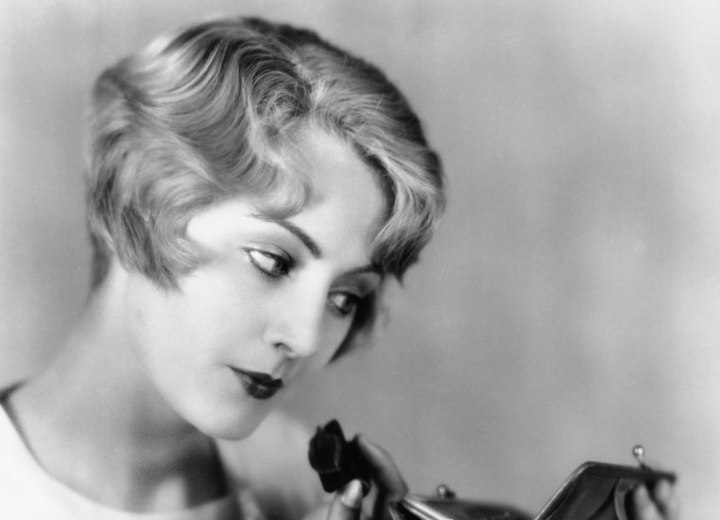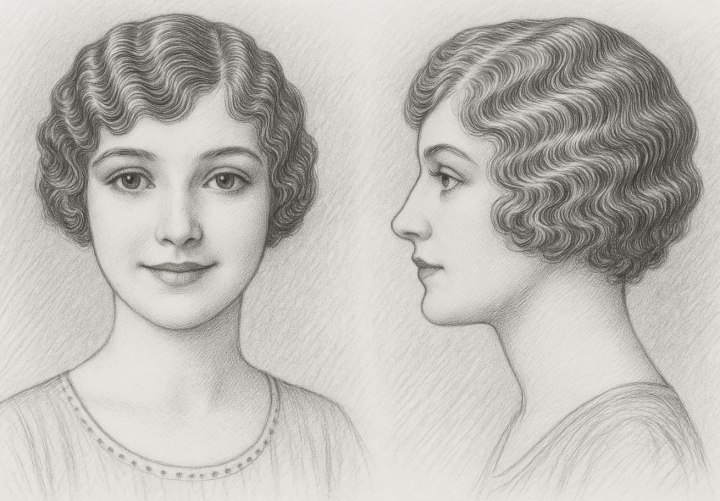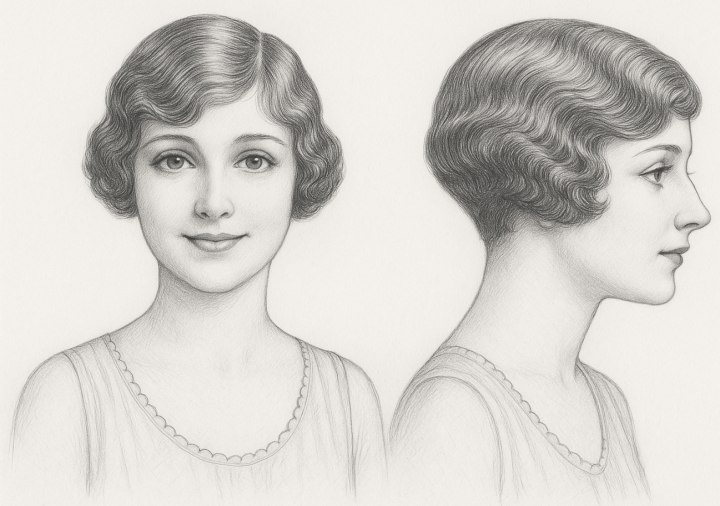Vintage Shingle Bob Hairstyle

A: The shingle bob, also known as the "Ina Claire bob," was a groundbreaking hairstyle that captured the rebellious spirit of the 1920s. Named after the famous Broadway actress Ina Claire, this bold haircut symbolized women’s growing independence and a break from traditional gender roles. It quickly became a hallmark of the flapper look: youthful, daring, and unapologetically modern.
The marcel or water-waved shingle bob was a popular variant that added texture and elegance to the basic shingle cut. This version incorporated stylish waves created either through marcel ironing (using heated curling tongs) or water-waving techniques. These deliberate, uniform waves added dimension and sophistication to the cut, giving it a more feminine touch while maintaining its modern appeal.

The authentic vintage shingle bob combines a distinctive cut with period-appropriate styling techniques. The defining feature of this iconic 1920s hairstyle was its architectural structure: cut to the occipital bone in back and expertly tapered below this point to form a characteristic "V" shape at the nape of the neck.
For styling the front and sides, women in the 1920s mainly used two methods:
1. Pin curls: Instead of today’s bobby pins, stylists would apply setting lotion to small sections of hair, then wrap the sections into flat, circular curls right against the scalp. These curls were secured with flat metal clips and left to dry completely, creating soft, face-framing curls once released.
2. Finger waves: To create the iconic finger waves, setting lotion was applied to damp hair. Then, using fingers and a fine-toothed comb, stylists would shape the hair into deep, sculpted waves and ridges. he waves would be held in place until dry, then brushed out gently for that smooth, undulating finish typical of the marcel style.

©Hairfinder.com
See also:
Vintage hairstyles
How to create finger waves
How to create pin curls